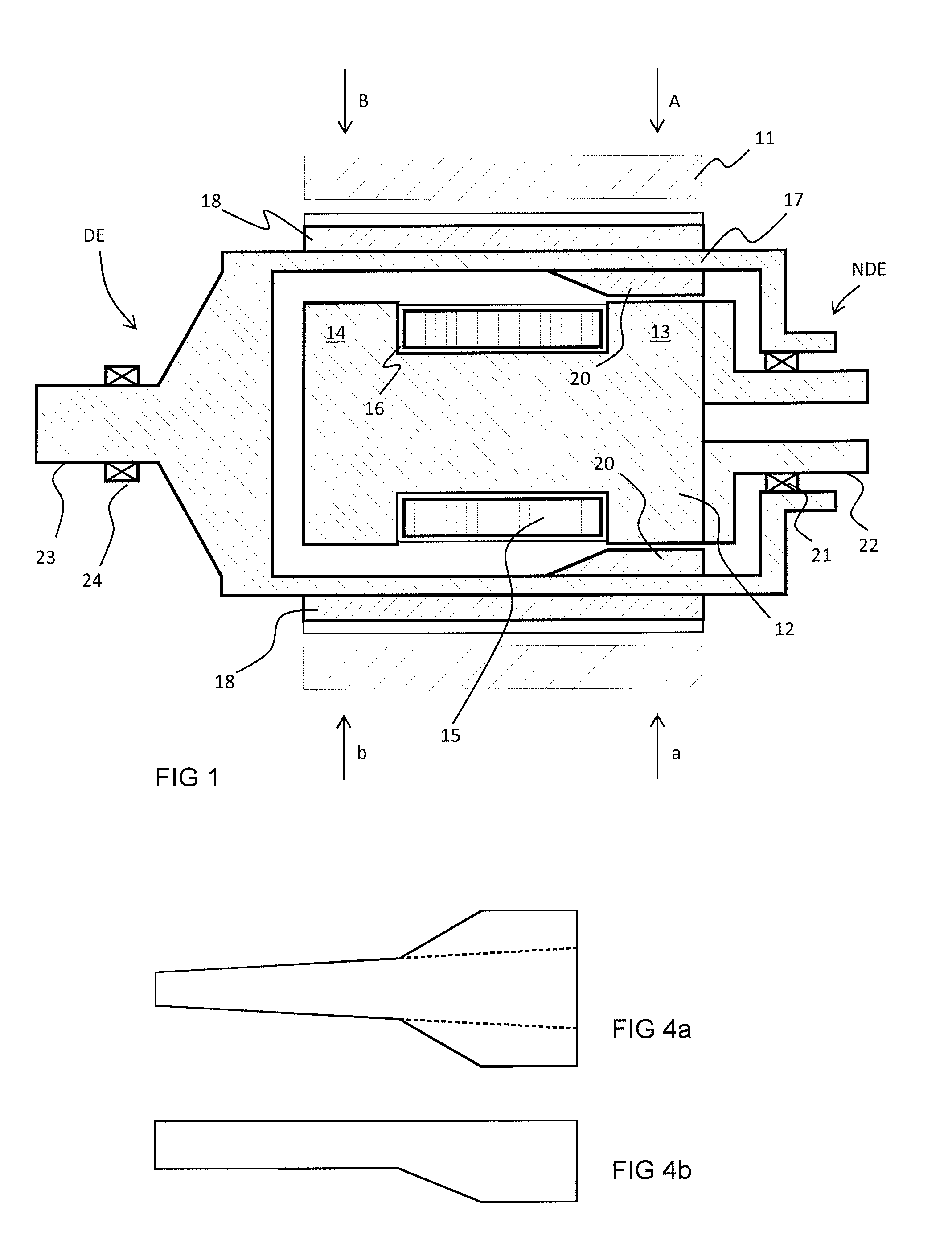Wind power generator
- Summary
- Abstract
- Description
- Claims
- Application Information
AI Technical Summary
Benefits of technology
Problems solved by technology
Method used
Image
Examples
Embodiment Construction
[0017]FIG. 1 shows a cross section of the wind power generator of an embodiment of the invention. The generator is cut in half in longitudinal direction that is the direction of the shaft of the generator. FIG. 1 shows the stator 11 of the generator being the outmost part of the generator. The stator is equipped with stator windings. The stator windings of the generator of the present disclosure can be windings of any known kind. Typically the stator windings are a multi-phase windings, preferably three-phase windings. As the rotor structure of the wind power generator of the invention forms magnetic poles which are comparable to permanently magnetized poles, the stator windings can be of design commonly used in connection with synchronous generators. More specifically, the stator windings are formed in the stator core such that the axial length of the stator winding corresponds to the length of the stator core. The stator windings thus extend in the axial direction of the core for ...
PUM
 Login to View More
Login to View More Abstract
Description
Claims
Application Information
 Login to View More
Login to View More - R&D
- Intellectual Property
- Life Sciences
- Materials
- Tech Scout
- Unparalleled Data Quality
- Higher Quality Content
- 60% Fewer Hallucinations
Browse by: Latest US Patents, China's latest patents, Technical Efficacy Thesaurus, Application Domain, Technology Topic, Popular Technical Reports.
© 2025 PatSnap. All rights reserved.Legal|Privacy policy|Modern Slavery Act Transparency Statement|Sitemap|About US| Contact US: help@patsnap.com



